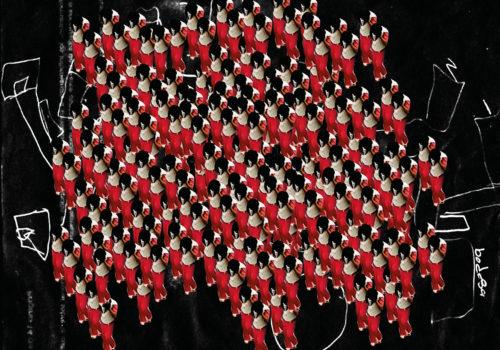In the opening pages of John Berger’s A Seventh Man: Migrant Workers in Europe, which he produced with the photographer Jean Mohr, Berger tell us this story:
A friend came to see me in a dream. From far away. And I asked in the dream: ‘Did you come by photography or by train?’ All photographs are a form of transport and an absence of expression?
WhileYasmine Eid-Sabbagh and Rozenn Quéré’s Vies possibles et imaginaires discusses absence and separation, but even more so transportation, across land, sea and air, but also emotional and visual transportation. Indeed, the work is a family album disguised as a piece of theatre (or vice-versa) based on the stories, memories and fantasies of four sisters who were each in turn exiled from, took refuge in, and emigrated to the Middle East, Europe and the United States, starting in the 1940s until today.
Miriam Rosen
Read the full text of this article in the French version of Le Journal.
Yasmine Eid-Sabbagh et Rozenn Quéré
Vies possibles et imaginaires
Éditeur : Éditions Photosynthèses, Arles, 2012
16,5 x 23,5 cm, 162 p., relié
1 500 ex
ISBN : 978-2-36398-003-8
32 €
















